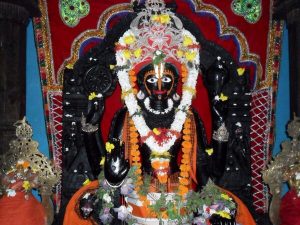Srimandir’s spiritual glory shines at Alarnath

Located about 25 km from the holy town of Puri, the ancient temple of Lord Alarnath in Brahmagiri is a spiritual gem revered by Vaishnavites and pilgrims, especially during the Anavasara (or Anasara) of Lord Jagannath and His siblings – Lord Balabhadra and Devi Subhadra – when Srimandir closes its doors to devotees for about 15 days following the ritualistic bath (Snana Yatra) of the deities.
The legend & deity
According to legend, Lord Brahma came down to this place and worshipped Lord Vishnu. Pleased with his devotion, Lord Vishnu asked him to carve out a four-handed deity in black stone, carrying a sankha, chakra, gada and padma in each hand. The hill was called Brahmagiri since Lord Brahma had worshipped Lord Vishnu at that place. The temple is believed to have been built by the rulers of Alwar, Rajasthan; hence the name Alwarnath or Alarnath. When Lord Jagannath, along with His siblings, falls ill after the grand bathing festival, He retreats from public view to recuperate. During this time, the devout, eager for darshan (divine sight), turn to Alarnath, believing that Lord Jagannath manifests here to bless His devotees. Many also claim that the name ‘Alarnath’ has been derived from ‘Alvarna’, which can mean ‘unseen’ or ‘invisible’ — aptly reflecting the deity’s role during the Anavasara period when Lord Jagannath is not seen in Puri.
Historical & spiritual significance
The Alarnath temple is closely associated with Lord Chaitanya, the 16th-century saint and founder of Gaudiya Vaishnavism. During one of his visits to Puri, Lord Chaitanya is said to have spent time in deep devotion and meditation at Alarnath during the Anavasara (or Anasara) of Lord Jagannath. So intense was his love for the Lord that he reportedly experienced divine ecstasy at the temple, leaving an imprint of his body on the stone floor in front of the sanctum. The mark can still be seen today. This connection has made Alarnath a vital pilgrimage stop for Gaudiya Vaishnavas and followers of Lord Chaitanya, particularly during Srimandir’s closure.
Architecture & rituals
The temple is built in the traditional Ka- lin- ga style of architecture with an ornate vimana (sanctum tower) and intricately carved stonework. Inside the sanctum, the idol of Lord Alarnath is resplendent, seated with divine symbols and adorned with garlands and sandalwood paste. During the Anavasara, the temple sees a surge in pilgrims who come to witness special rituals and partake in the Khiri bhoga — a rice pudding offering believed to be especially favoured by the Lord. This bhoga is considered extremely auspicious and is eagerly sought after by visiting devotees.
A spiritual alternative
For many, a visit to Lord Alarnath offers an intimate and powerful alternative to the grandiosity of Srimandir. It is not merely a stopgap for devotees during the Lord’s brief absence but a deeply sacred space in its own right, filled with centuries of devotion, mysticism, and divine presence. In the quiet village of Brahmagiri, away from the hustle of Puri, Lord Alarnath continues to receive the love of devotees, standing as a timeless symbol of unwavering faith and divine accessibility.
News